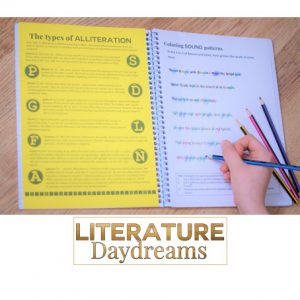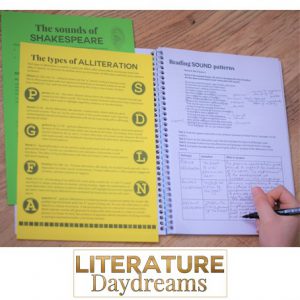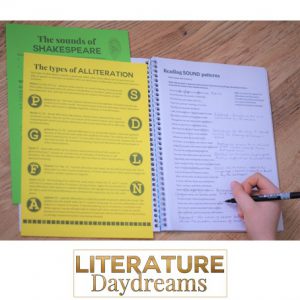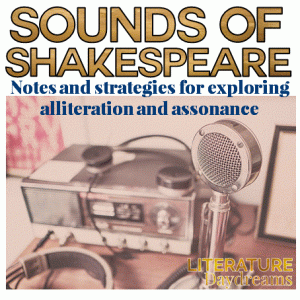- in Freebie Included! , Literature , Shakespeare
- |
- 2 comments
The Sounds of Shakespeare
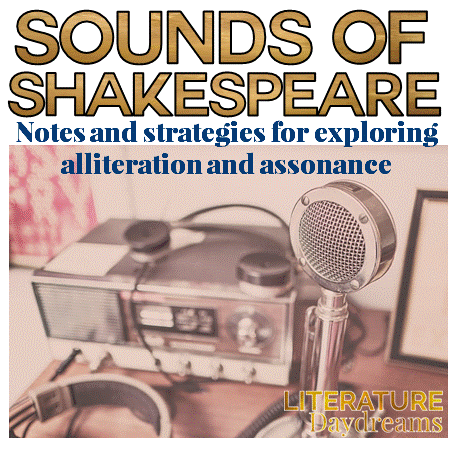
When students first begin studying Shakespeare, we spend most of our time focusing on understanding the language, talking about the characters and events, maybe even discussing the themes. What do we do when our students are capable of going further? What’s the next step in analysis and exploration? Well in answer to that question – I wanted to develop a bit on my last Shakey blogpost – and give you a little freebie to help.
The Sounds of Shakespeare
My first stop, after we have moved on from comprehension and inference, into analysis is to focus on the Sounds of Shakespeare. His work after all was written to be performed and this element is essential to our understanding of it. It is the performance of his words that allows us to see and to hear the emotion, the performance is where interpretation becomes more fluid, less set. We’ve all seen this FB post:

Despite how easy it would be if the meaning Shakespeare’s words were fixed, they are not, and our most-able students are capable of discussing this.
Alliteration and Assonance
Often – for me – this discussion of sound begins with the most simple sound patterns: alliteration and assonance. Specifically these patterns were used (like rhyme) as an aid to memory, actors used these sounds to help them memorize their lines. The rhythm created by the use of these patterns enables the words to flow without having to actively or consciously think about what words come next.
Try this:
As a lesson opener, write the beginning of a nursery rhyme on the board. Now if you teach a diverse bunch of kids, like I do, you will need to choose carefully. (Remind me to tell you about the time I assume all my students had read Goldilocks…) My starter goes something like this:
1. Write the words ‘incey wincey spider’ on your whiteboard.

2. Ask the class to dictate the rest. Then ask them when was the last time they actually remember saying this nursery rhyme? I guarantee – even for those with younger siblings – these teens are not going around singing nursery rhymes all day.
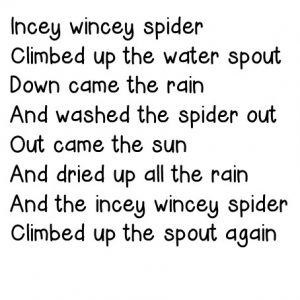
3. I then pose the question, why it is easy to remember, when we haven’t said it for years? I often say tell them at this point, that I lived at my old address for 8 years but today I can’t remember my postcode (zip code). Why can I remember this nursery rhyme?
The answer is often because of the rhyming words or repeated words, it is easy to remember. But then we look at little further.
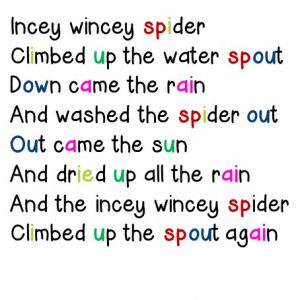
Yes there are a ton of repeated words – and this one reason why I use this particular rhyme, because sometimes one glaring technique (a powerful metaphor or a biblical allusion) can take away from everything else that is going on.
Look at the assonance and alliteration here – the long /i/ sound in ‘spider’ is echoed with ‘dried’ and ‘climbed’; the /ow/ sound in ‘spout’ is seen again in ‘out’ and ‘down’. These assonance echoes aid memory just as much as the rhyming of ‘rain’ and ‘again’. The alliterative elements are also easy to miss ‘spider’ and ‘spout’ – no rhyme, but for purposes of memory it works. I haven’t even highlighted the alliterative /d/ sounds throughout.
Once my students are comfortable with alliteration and assonance BUT before we dive into our Shakespeare play, I use extracts from famous Shakespearean speeches to force their focus onto sounds { see what I did there? force their focus }.
Why don’t I use the play we are currently studying? Well, I could I guess. But the problem is, my students know too much. They know all the characters and themes and once I ask them to start looking at the alliteration and assonance, they are going to get distracted by their knowledge! Wow! I never, ever, thought that would be a bad thing (and it isn’t really). I want them focus on the sounds alone. What do those sounds reveal? Without using prior knowledge, tell me about the sounds.
Now try this:
So download my freebie – right now – and that way you have it all ready to go. You can go through the info pages with your students as much as you like, then pick one of the coloring exercises for your students to complete, including is an extract from R&J and Sonnet 116.
Here students move from looking generally at repeated sound patterns to focusing on specific patterns and what they might mean. There are two explanation sheets included – the yellow one seen in the above picture takes students through the 8 types of alliteration and why they are used. Students can practise identifying alliterative patterns and then giving them meaning. The upside – anything using coloring pencils can’t be real work, right?
Moving on up
Ok. Coloring pencils away now. I am always super impressed with the ideas my students have following these exercises. They create real inferences, real analysis during these tasks. So to keep pushing them on, and building their confidence, we then move onto a simple annotation and exploration exercise.
Annotating a shorter passage (from Macbeth or Henry V) for alliteration, assonance and how these reveal emotion. These sheets give students an opportunity to develop their analysis and write up their ideas but in a low-pressure, low-stakes table. It again generates and aids great discussion.
Finally the piece de resistance
Analyzing a whole speech – so if you are studying a Shakespeare play, then this would be the opportunity to introduce a speech or soliloquy from that play. For example – when teaching Macbeth, I might pre-teach these skills on the lead up to analyzing “Is this a dagger?” in Act 2, or with Antony and Cleopatra, I often use this as preparation for Enobarbus’ barge speech.
I’ve included part of Mark Antony’s funeral speech from Julius Caesar, as an example for you, partly because this is the first play we teach when our students arrive in Year 7 / Grade 6 at our school. I love the play and by this point in the play (three Acts in) my students are pretty confident with understanding the language and ideas.
So start with a tiny, plucky spider and finish with some fierce and confident analysis.
Teach on my friends.
Ps.
Do sign up for my newsletter, you will gain access to my free resource library – I have put the answer keys for Sounds of Shakespeare on there, and much, much more!

